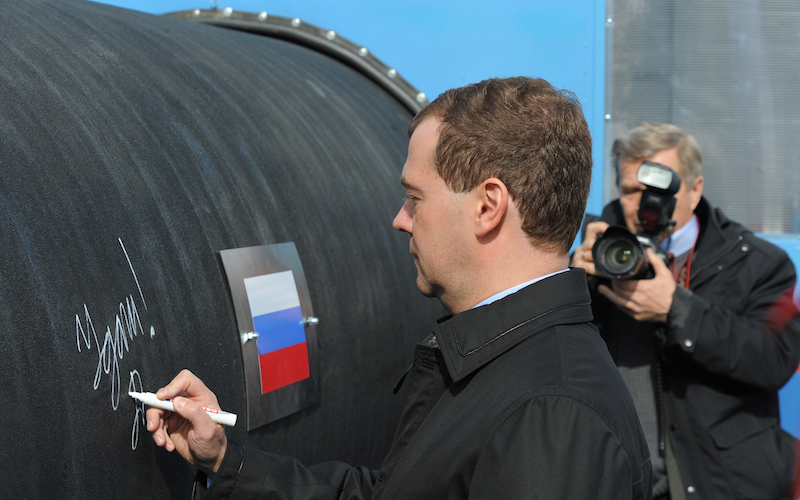
The Progressive Evolution of the International Gas Markets
While it is very well reported by the international media that oil markets have been hit hard by rapid and pronounced declining prices since the second half of 2014, natural gas prices have also been recording a downward trend which has received limited attention.
The different approaches by the media to the recent developments in the oil and gas markets could be explained by the role OPEC is playing to end the declining oil price crisis. It is commonly presumed that OPEC’s largest producer, Saudi Arabia, and the rest of the member countries are in charge of reducing their production volumes to rebalance global oil oversupply.
However, as was the case during the crisis of mid 80s and late 90s, it should not be assumed that Saudi-Arabia would accept being the main casualty of the crisis and be willing to bear the burden of restricting its own production and revenues without the participation of the other producers on a fair basis, including non-OPEC members.
It was openly declared by top executives at Saudi-Aramco and OPEC representatives that the deep reduction of prices is not only problematic for all producers, but was necessary to halt the sustained growth of oil production from non-conventional reservoirs in North America and to deter sizable undertakings on large non-conventional deposits that have been identified in many regions around the world.
Natural gas has been recording its own path of production supply expansions and declining prices. According to the Energy Information Administration of the Department of Energy, the spot prices at Henry Hub, the natural gas benchmark in the United States, in 2015 reached $2.6 per million BTU which is its lowest annual average since 1999, while production recorded an annual increase of 6%, accumulating a 50% growth compared to the production volumes recorded in 2007. This remarkable achievement occurred even with fewer rigs employed due to efficiency gains reached in terms of wells drilled per active rig and production per drilled well.
It has to be noted that natural gas production in the United States is mainly obtained from unconventional reservoirs and that such growth preceded the growth of oil production in the country which comes from unconventional reservoirs.
By mid 90s, after a series of natural gas price spikes and due to the mature stage of natural gas conventional reservoirs, an independent company in the United States started what it has now been recognized as the “unconventional hydrocarbon revolution” which is one of the most relevant innovations achieved on a global perspective of the past two decades.
By targeting gas production in already known superabundant and large “unconventional” deposits, the potential of not only compensating natural decline of already producing reservoirs but also sustaining large increments of new production on the medium to long term increased dramatically. This was made possible by a simply entrepreneurial approach of combining two already in-place drilling techniques -horizontal drilling and fracking- to address a market need.
One of the main causes of the current oil price crisis (along with the slowdown of Chinese consumption and the resilience of Russian production) came from the natural gas side of the hydrocarbon markets. This is quite unique in historical market developments of oil and gas.
The implications on the whole energy market are deemed to be transformative, not only due to its sizable and rapid short-term response but also due to its large potential in the medium to long term.
The supply developments in North American gas supply are also driving changes in the rest of the world adding supply volumes, introducing gas-on-gas price competition and lowering prices, despite of the fact that market dynamics are different from region to region, due to different profile of contracts and the lack of a global infrastructure that exists for oil.
According to the latest report released by the International Gas Union on the topic of pricing, while the entire natural gas market of North America is negotiated by gas-on-gas competition, on a global basis around 17% is adjusted by formulas which link the evolution of the price of natural gas to that of oil or oil-by products; 35% is subject to regulation; 43% is under gas on gas competition and 5% is derived from other forms including bilateral monopolies.
The share of gas-on-gas competition -for which the price is determined by the interplay of supply and demand over a variety of different periods- is trending higher reaching 43% in 2014 compared to 31% recorded in 2005, mainly at the expense of the oil-related mechanisms.
There are multiple reasons for such increase, which is not only based upon the supply response supported by the incremental production coming from unconventional deposits. Among other relevant reasons are the diversification of supply sources introduced by Liquefied Natural Gas (LNG) physical trading and the daily quote on natural gas on physical hubs (e.g. Henry Hub) or national hubs (e.g. NBP in the UK) and the size of its financial participants which facilitate buyers and sellers to hedge against the fluctuation of prices.
In particular, international physical LNG trade has been growing rapidly and it is estimated to have reached $120 billion in 2015. Even while it remains below oil, as the first product of the world in terms of international trade and is below oil by products and pipeline natural gas, it is estimated that LNG has surpassed iron ore and agricultural commodities in these terms.
The reduction of international gas prices was not as rapid at that recorded in the United States. Nevertheless, according to the International Monetary Fund the wholesale border prices of Russian gas in Germany averaged $5.8 per million BTU in December 2015 compared to the annual average of $11.2 per million BTU in 2013. The prices of Indonesian LNG in Japan averaged $9.5 per million BTU in December 2015 compared to the annual average of $17.3 per million BTU in 2013.
In 2016, new LNG export capacity will come on stream. The Sabine Pass in the United States is expected to make its first exports by March and with sequential units coming on stream it is expected that the United States will be a net exporter of natural gas by mid-2017.
Geopolitics behind oil and gas developments is also intertwined. Even when, there is no organization such as OPEC for gas producing countries, the large undertakings and the hefty investments required in upstream developments and infrastructure for transport and storage call for not only business interactions but also for political participation.
For this reason, there are many associations among producing and consuming companies developing large-scale fields on a long term perspective. For example, Russia and China have recently concluded an agreement to partner with the China Silk Road Fund Co. for Yamal upstream and LNG massive projects in Northwest Siberia, together with Russian Novatek, French Total and Chinese CNPC.
Another example that oil and gas stand together on a geopolitical and business perspective come from the expected offer of partnerships to international companies for oil and gas development in Iran following the lift of sanctions. While the terms and conditions will be released for each oil and gas field it is envisaged that Iran would offer 50 hydrocarbon fields, of which 21 are gas fields and that among the gas fields all but 2 onshore fields are totally undeveloped.
Decreasing carbon dioxide emissions
Coming back to the United States, it is interesting to note that natural gas is finally displacing coal as the leading fuel for generating electricity. According to the Energy Information Administration of the Department of Energy, low prices and strong production not only drove a sustained increase in the use of natural gas for electric power generation, but also enabled natural gas to surpass coal as the leading source of electricity generation on a monthly basis for the first time in April 2015, and again in each of the four months from July through October.
Once considered the “bridge” fuel to a cleaner energy future, the “preferred” option for power generation or even the “destination” fuel due to its flexible and reliable supply in relation with the lower disposition of zero emission sources of electricity, sun, wind or even hydroelectricity do not produce on a regular basis subject to non-controllable factors. The growth of natural gas was not constrained by a producer preference to oil, but by the preference to coal, which is an affordable and an abundant source for electricity in large energy consumer countries, especially in the United States, China and India.
In brief, electricity, produced using natural gas, emits half the amount of carbon dioxide than that produced by coal.
As crisis brings real opportunities, the potential replacement of coal in power generation could be more rapid than expected some years ago. Similarly, and contrary to conventional beliefs, low petroleum (oil and gas) prices could drive the way forward for innovative approaches to integrate zero emission sources of energy in the energy mix.

